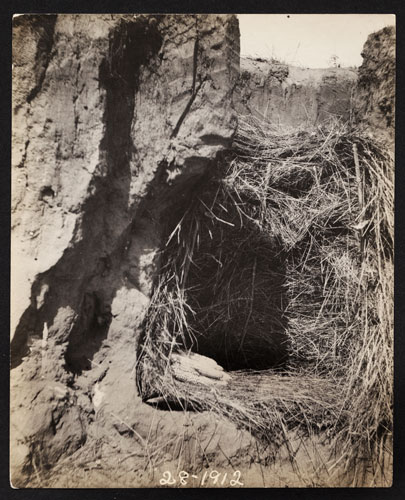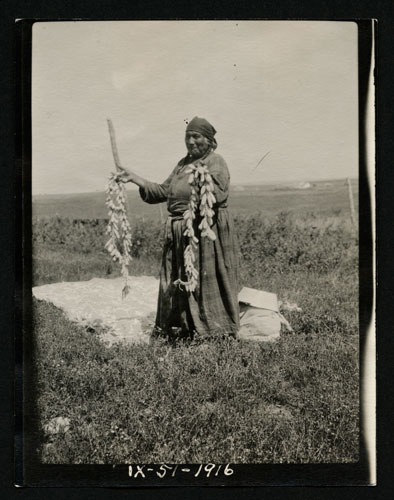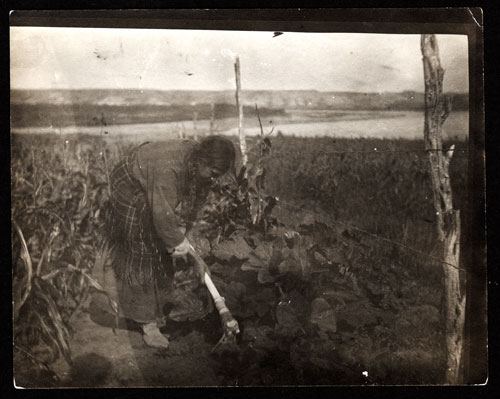Intro | Frontier Scout | Wales | Trobriand | Surgeon Reports | Marsh | Indian Gardens
Though soldiers and officers stationed at Army posts throughout the West often met and worked with Indians, these encounters did not always lead to understanding and the exchange of important information. Indians often faced food shortages during a particularly long winter, or after a dry and unproductive summer, but they seemed to have avoided scurvy during the years when the Army was becoming established on the northern Great Plains. Assistant Surgeon W. H. Gardner noted in his 1869 report from Fort Abercrombie that Indians did not have scurvy, and though he knew that they ate wild fruits, he could not understand how these fruits could be available in late winter in quantities sufficient to prevent disease.
What the Army surgeons did not understand was that American Indians had long before established foodways that prevented starvation and vitamin deficiency diseases. In central Dakota, the Arikara, Mandan, and Hidatsa had gardened for centuries, raising corn, squash, and beans to supplement wild vegetables and bison meat. They dried the vegetables and stored them in underground caches for use in late winter.
Nomadic tribes usually did not have gardens, but gathered wild fruits and vegetables which they dried and stored, or mixed with animal fat and dried meat to make pemmican. Pemmican contained nutrients and calories necessary for subsistence, and the fat served as a preservative. Gardening (or horticultural) tribes also traded surplus crops to nomadic hunting tribes and occasionally supplied the Army with corn.



Address:
612 East Boulevard Ave.
Bismarck, North Dakota 58505
Get Directions
Hours:
State Museum and Store: 8 a.m. - 5 p.m. M-F; Sat. & Sun. 10 a.m. - 5 p.m.
We are closed New Year's Day, Easter, Thanksgiving Day, Christmas Eve, and Christmas Day.
State Archives: 8 a.m. - 4:30 p.m. M-F, except state holidays; 2nd Sat. of each month, 10 a.m. - 4:30 p.m. Appointments are recommended. To schedule an appointment, please contact us at 701.328.2091 or archives@nd.gov.
State Historical Society offices: 8 a.m. - 5 p.m. M-F, except state holidays.
Contact Us:
phone: 701.328.2666
email: history@nd.gov
Social Media:
See all social media accounts